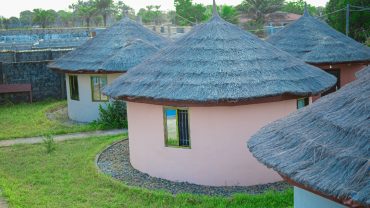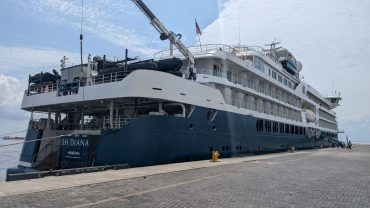National Tourist Board of Sierra Leone
This tourism brief was provided to us courtesy of the National Tourist Board (SL). It highlights the background and future of Tourism in the country. For more information please contact:
National Tourist Board of Sierra Leone
Lumley Beach, Freetown.
Adjacent Police Post
Website: www.sierraleonenationaltouristboard.com
Email: info@sierraleonenationaltouristboard.com
ntbslinfo@yahoo.com
P.O Box: 1435
TOURISM IN SIERRA LEONE
Past and present
INTRODUCTION
Tourism in Sierra Leone, as in other developing countries, has become the most dynamic and fastest growing industry. It is an aggregate of many different industries and services, and is influenced by almost every facet of society.
Many governments in developing countries including Sierra Leone expect economic and social benefits from tourism development such as: –
- foreign exchange earnings
- the development of areas with no other immediate possibilities of expanding economic activity
- creation of employment opportunities
- a boost for the local production of the goods and services consumed by the tourists
- more tax revenue for the State
- the integration of national cultures and societies and safeguarding of the national cultural identity from foreign culture influences
- reasonable returns on investment in the sector
- the promotion of the true image of the country to attract holidaymakers and foreign entrepreneurs as part of the drive to step up international political and economic cooperation
- encouraging fair distribution of national income and creating new markets for consumer goods
- providing additional infrastructure and amenities that will encourage and support the tourist industry as well as benefit local and national interests
It is in pursuit of these benefits that the government of Sierra Leone had identified tourism as a priority sector for development – thus tourism has now become the largest contributor to the economy of Sierra Leone after mining and agriculture.
OBJECTIVES
Optimise the economic and social benefits of tourism to Sierra Leone, taking into account:
- Foreign exchange earnings
- Creation of employment opportunities
- Increase in investment
- Developing the quality of life of the people
- Enhancing and preserving the cultural heritage and physical resources of Sierra Leone
POLICY AND STRATEGY
- Earning and not number of arrivals to be the principal measurement for growth
- The private sector is to be the principal supplier of tourism services and facilities
- Development to enhance the long-term image of Sierra Leone as quality up market destination
- While Beach and Sea will remain the principal holiday product, they will be supplemented by inland scenic, wildlife and cultural attractions that will offer a “total African experience”
- Extension of the tourist season
The overall development objective for Sierra Leone tourism concentrates on endeavouring to meet the needs of tourists by ensuring the provision of tourist amenities, facilities and services of appropriate quantity and quality.
EMPLOYMENT
Because of the nature and variety of employment within the hotel and tourism industry, accurate statistics are difficult to obtain. However, according to the International Labour Organisation statistics, about 8,000 jobs in Sierra Leone are tourism dependents. This figure will increase considerably in the next 3 years after the tourism establishments under construction are complete; since tourism is also a labour-intensive service activity.
ENVIRONMENT PROJECTION
Aware of the great impact of tourism activities on the environment and the rapid damage an uncontrolled tourism development can cause to the environment, government is very conscious of the importance of the conservation and protection of the environment in the development of the tourism resources of Sierra Leone. In this vein, government adopted a policy of developing Sierra Leone as middle and up market destination and to ensure that the environment is maintained in a condition, which corresponds to the needs of the tourists, the local habitants and to national objectives.
FACILITATION AND TRANSFER
Facilitation and transfer at the Freetown International Airport have always been cumbersome and a source of frustration for arriving tourists.
But with the relentless efforts by government to develop the tourism industry, Freetown International Airport now continues to improve under a UNDP assisted programme (Airports Authority Project), which was established in 1988. The World Bank has also provided assistance to the Airport Authority for infrastructural improvement, such as the Arrival/Departure and Check In areas expansion, modernisation of equipments etc. Transfers to and from Lungi Airport have improved significantly from the yesteryears. Today passengers have the options of Ferries across the Targrin – Kissy/Government Wharf route, helicopter, Pelican water taxi and hovercraft to the Aberdeen and hotel areas.The ferry service has been significantly improved with two of the large ferries (vehicle passengers and baggage). For flight departures and arrivals, the ferries now operate to and from Government Wharf, which reduces the traffic congestion between Kissy Terminal and Freetown. See information on getting to Sierra Leone.
PROSPECTS FOR TOURISM IN SIERRA LEONE
Despite the slowing down of the growth in economic wealth of developed countries that generate tourist flows to developing countries including Sierra Leone, the world, and in consequence tourism, is in a period of rapid transition. Some nations are moving from an industrial society to a post-industrial one with changing life styles and values. The present desire to accumulate material possessions is also showing signs of lessening. There are also improvement in air transport and other modes of transport. Forecasts are continuously being revised and in spite of some constraints and setbacks, the world’s political and economic atmosphere today seems better disposed to increase growth in the tourism sector at anytime in history.
With the emphasis put on tourism development by government, Sierra Leone stands to benefit from the current favourable global tourism trend, as the Western European market is showing signs of steady growth. The considerable North American market potentials will also begin to be tapped as soon as Airline services to the region are established.
With tourism still in the infancy in Sierra Leone, exploiting the international tourist industry can be a major long-term advantage. In adopting in planned and regulation development approach, Sierra Leone, by and large is still in a position to expand its tourism sector in a way which would emphasize on environmental conservation with a view to enhance the quality of the overall tourist products. This will no doubt, contribute substantially toward improving the standard of living and quality of life of her people.
BEACHES
Tourism in Sierra Leone is highly beach oriented. The beach areas of Sierra Leone fall into seven groups:
(i) Sulima, between the Moa and Mano Rivers. A relatively accessible area with good beaches. About 11km in length.
(ii) Turner’s Peninsular, an immense beach bar with an unbroken length of 100km, which appears to have a continuous quality beach.
(iii) Sherbro Peninsular, a similar beach bar, some 40km long on the south of Sherbro Island.
(iv) Shenge, a stretch of perhaps 15km of attractive beach in the Shenge area
(v) Freetown Peninsular, having a 40km length of coast facing South West from Aberdeen to Kent with exceedingly attractive and varied beaches by the Peninsular Mountains.
(vi) Lungi Beaches, along the Bullom Peninsular. Approximately 15km in length.
(vii) Scarcies Estuary, a beach bar of some 8km in length to the south of the Scarcies estuary.
The whole Western Coastline from Aberdeen to Kent comprises a series of excellent beaches with a variety of character. The southern shore from Kent to Tombo also has some small beaches of character, but beyond Tombo the coastal area becomes mud flats and swamps. The North Eastern Coastline has small beaches as well.
For more information about tourism developments and opportunities please contact:
National Tourist Board of Sierra Leone
Lumley Beach, Freetown.
Adjacent Police Post
Website: www.sierraleonenationaltouristboard.com
Email: info@sierraleonenationaltouristboard.com
ntbslinfo@yahoo.com
P.O Box: 1435




Comment (0)